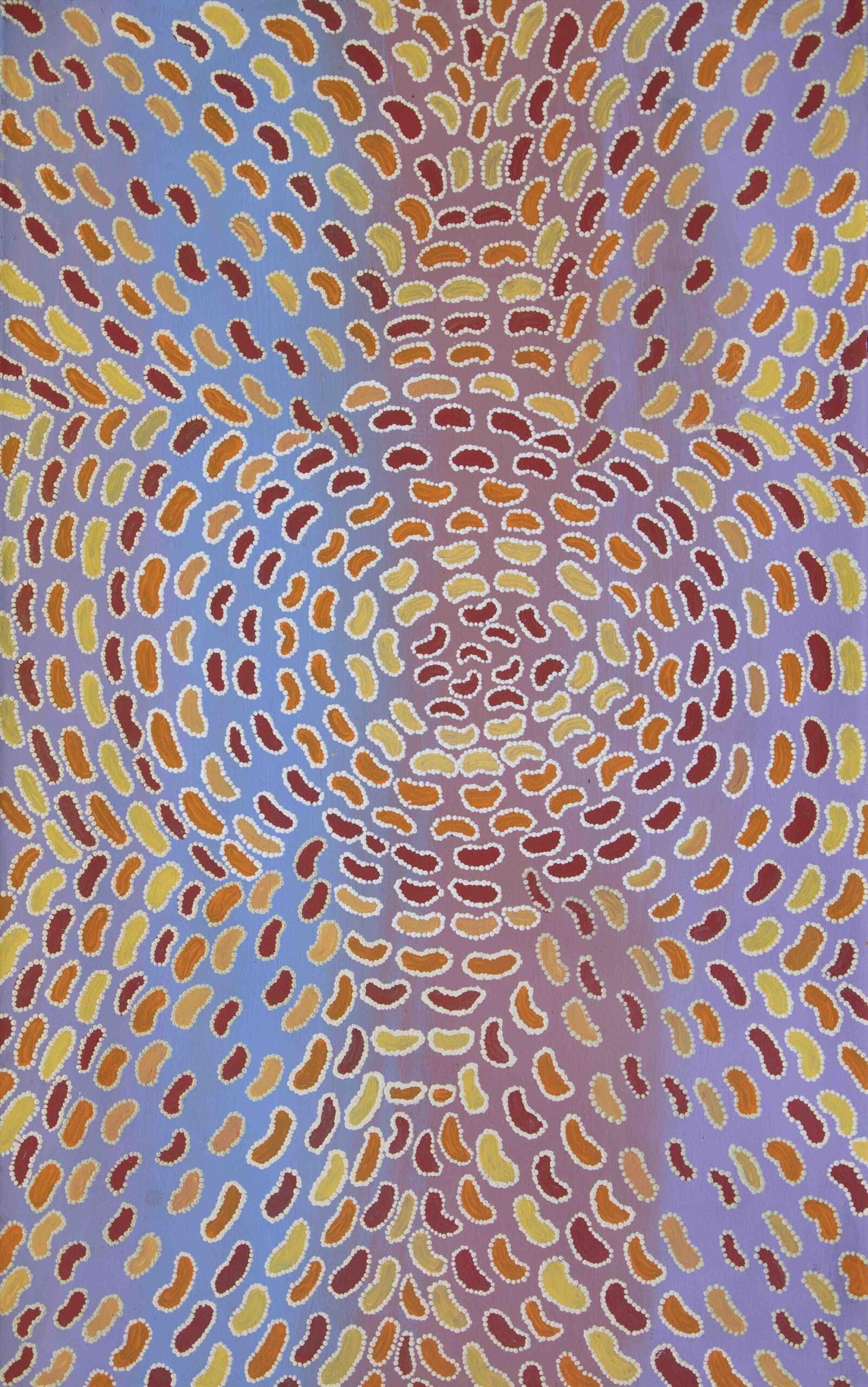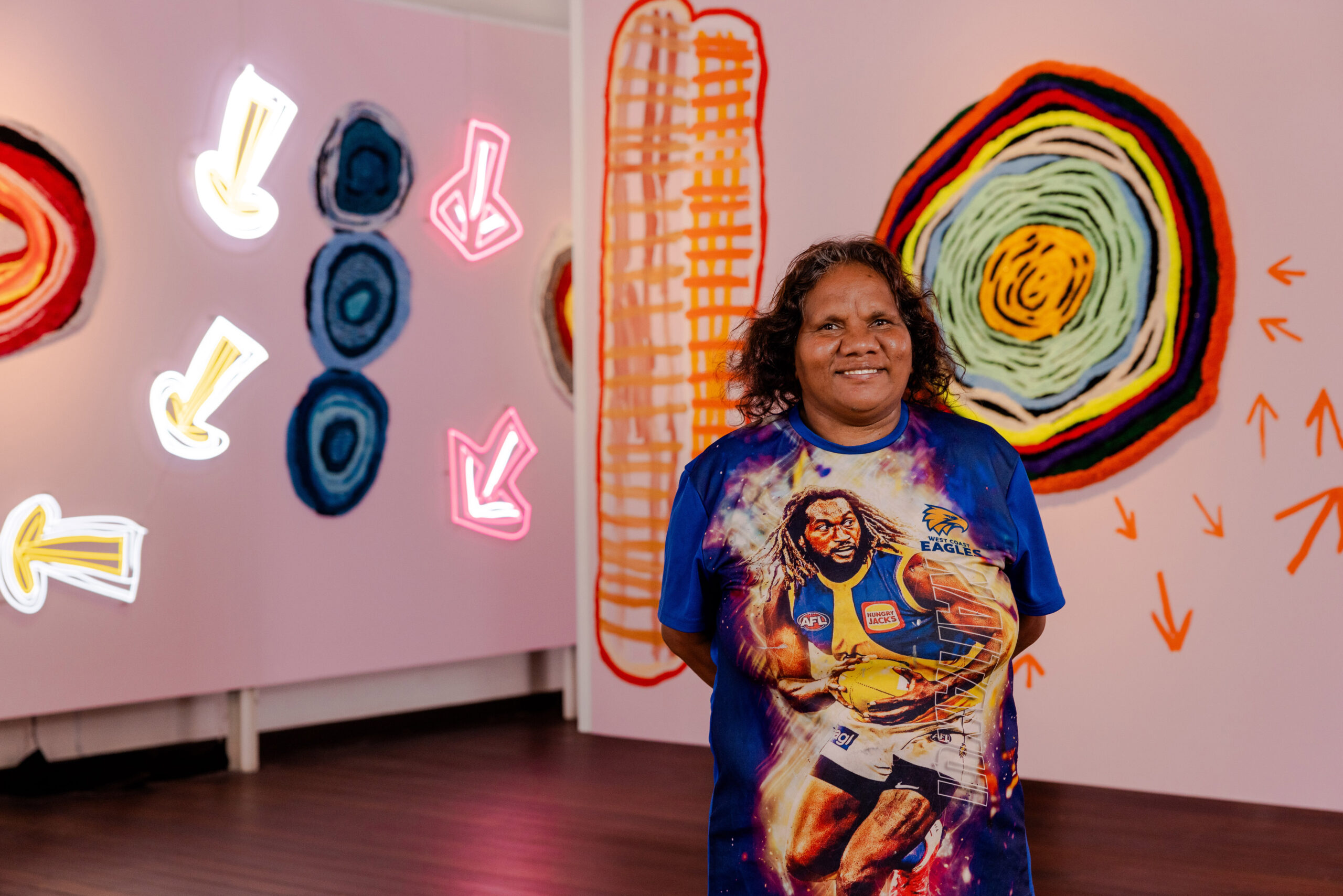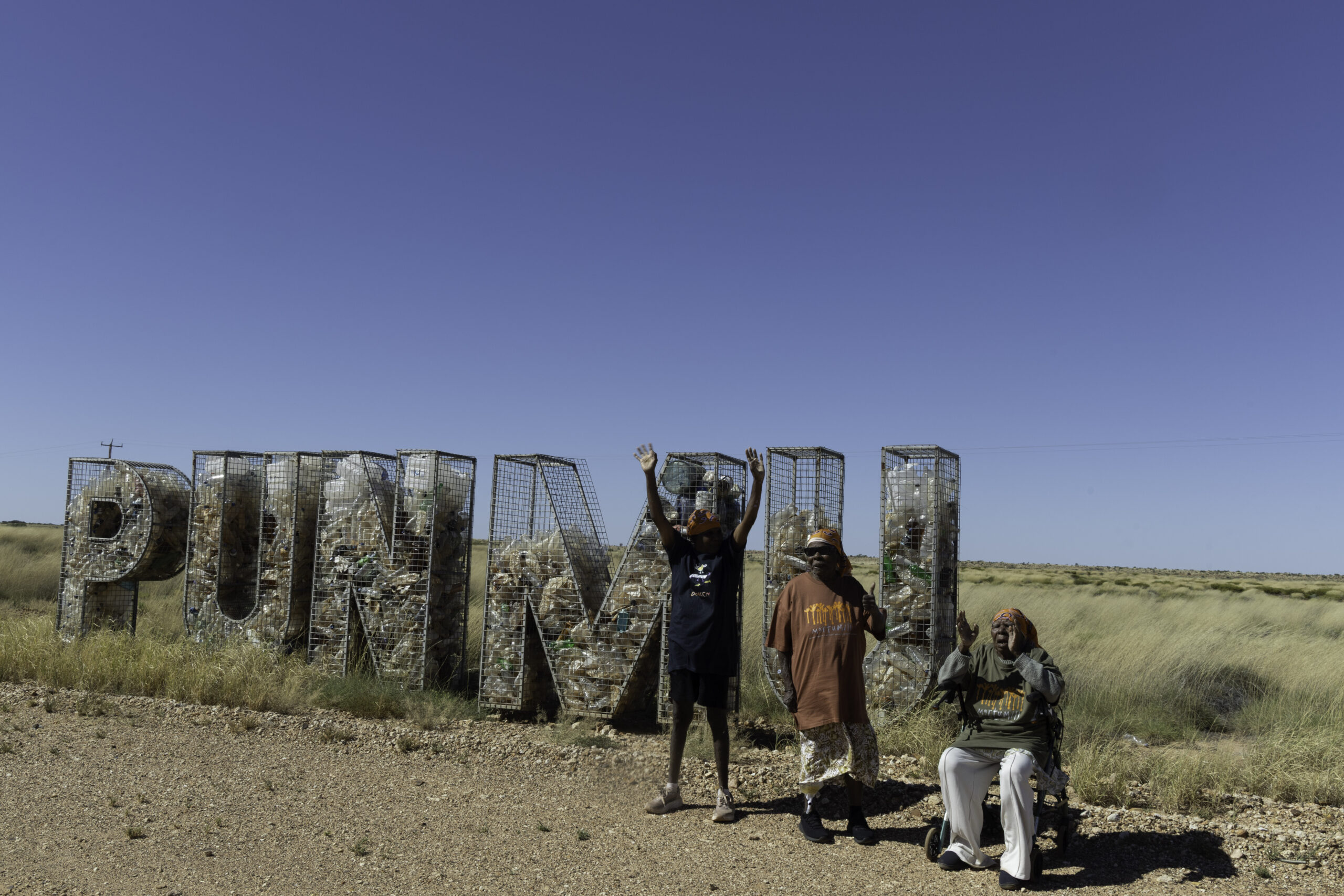Collaborative paintings are often more about the process and the message they carry rather than the final outcome. Whilst the finished painting is important, the real work of these artworks happens in the making. They have an ability to cross generations, to foster knowledge sharing and act as reference points for further conversations and investigations, this is where their true value lies. The wantimili (women’s) collaborative Mirka (bushfoods) painting is no different. Started in 2021 on a women’s bush food and medicine camp, it has travelled the desert from Parnngurr to Punmu, Kunawarratji and back to Newman. It is a painting created to share knowledge, and is the embodiment of the Martu çoncept of kujungka (meaning ’all together in one, or ‘working together’). Over the past 2 years 34 women have come together to add their knowledge and stories to the canvas.
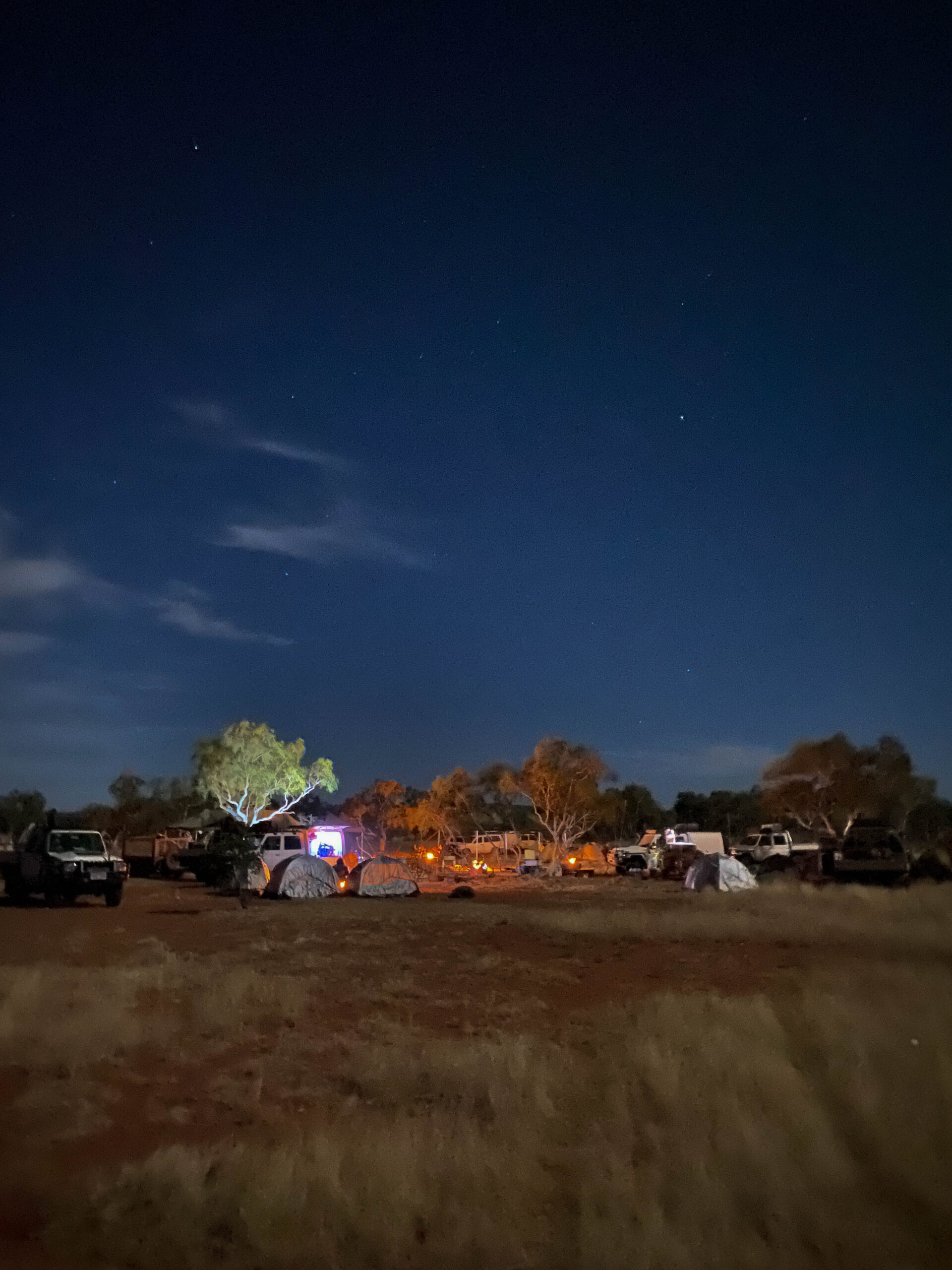

The first iteration of the canvas started nearly 2 years ago. Gathering in Newman, artists and rangers set off early to meet the other women from Jigalong who would also be coming on the camp. From Jigalong we would then convoy on to Yulpu, a large soak located within the McKay Ranges, just south of Parnngurr. This was to be base camp for the week. Arriving in Jigalong there was some last minute enthusiasm with more women wanting to jump on the trip. A bit of car shuffling ensued- and of course a few last minute trips to the shop! With motorcars piled high with swags, we finally took off. Arriving at camp we were greeted by the women of Parnngurr who had already set up camp. All we needed to do was pop up our tents and roll out our swags. Settling into the rhythm of camp life- there were cups of tea by the fire, morning trips out looking for plants, listening and recording as the older women spoke of their uses, then heading back to camp to make bush medicine, paint and rest.
As we rolled out the blank 3 metre canvas there was lots of discussion about how to start, how to tell the story of the camp, what it might look like, what was to go in and what was to be left out. The older women sat back whilst the younger ones talked it out- it was decided that the names of the plants would be put down first. The young women sat around the canvas each picking up a piece of chalk and writing the names of plants, then, picking their colours, started painting. Some would call out asking what a particular plant was for, with the older women piping in from the background. Over the camp people would gravitate to the canvas, adding little bits here and there, seeing how it was going and talking about what should happen next.

The first camp created the map for the canvas. The base layer had been put down, now it was up to the other women to add their marks and their knowledge. The canvas then travelled to Punmu where a similar camp was held. It then went to Parnngurr where there was so much conversation about particular plants that brushes would be put down and swapped for an afternoon looking for plants. As much as the painting had become about the learning process, there was still an underlying desire to bring it all together into a cohesive artwork- the marks of 34 women into a singular visual voice. Many of the older artists had experience working on large-scale collaborative paintings. In their wisdom sitting side by side with the young ones, they guided the painting into completion- with an astute eye guiding the sections that needed more attention, and indicating when the work was done.
The ‘Mirrka’ painting holds the marks of artists who have established careers, and others for whom it was their very first time painting. A painting rooted in its process of education, but one that also sits strongly in its final visual outcome. Traditional ecological knowledge of plant properties is encyclopaedic, with plants used for purposes as diverse as food resources, carving implements, tobacco, firewood, shelter construction, and bush medicines. Today that knowledge is still strong and ongoing. As lifestyles have shifted, sharing valuable knowledge of plants continues to play a vital role in Martu people’s lives. It represents connection and responsibility to Country, and ultimately survival.

Words: Zoe Martin
Images: Martumili Artists
